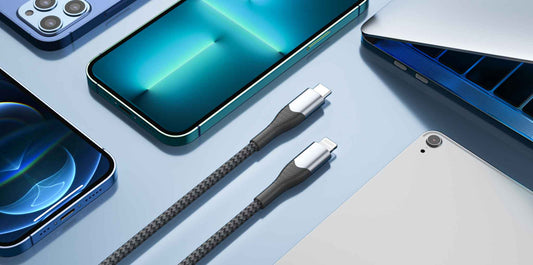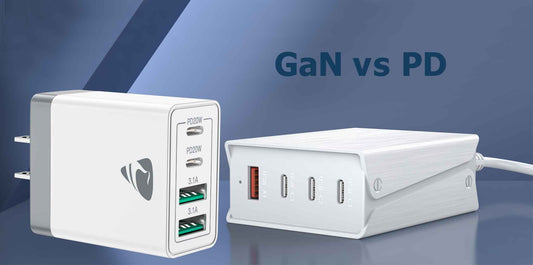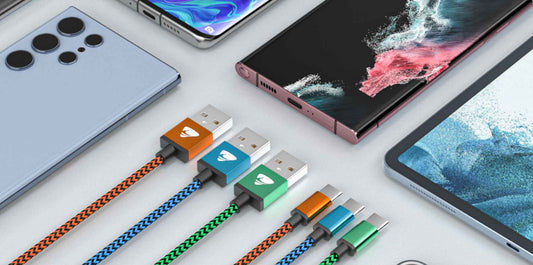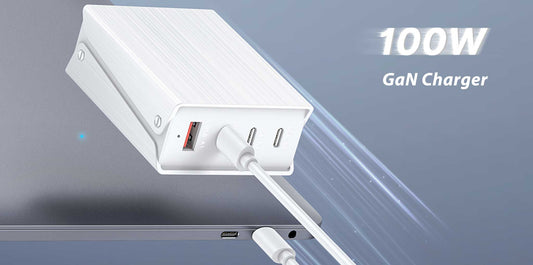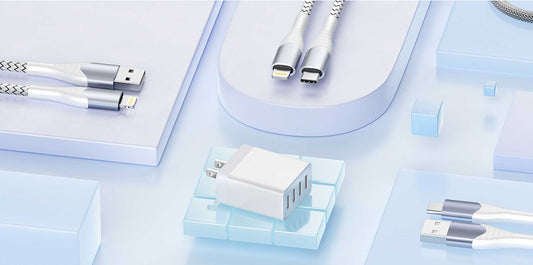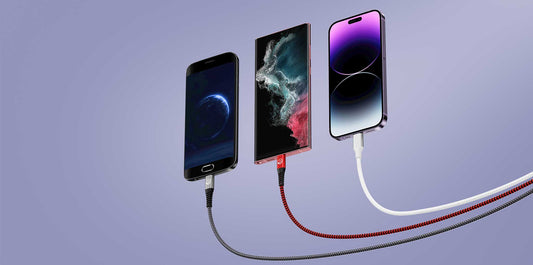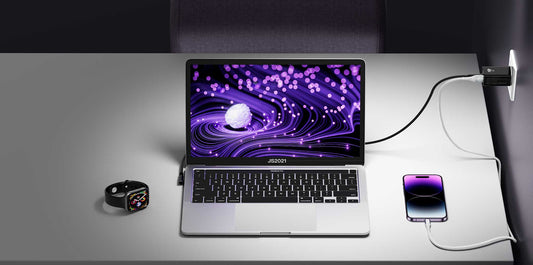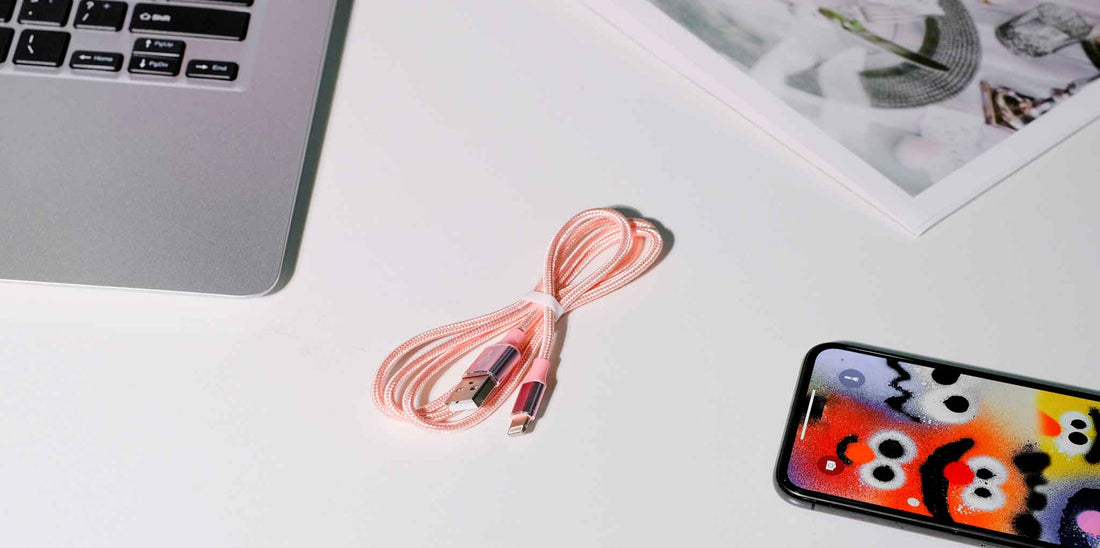
How to identify fast charging cable?
Fast-charging Cables VS Regular Cables
USB cables significantly impact how swiftly your device's battery fully charges. If you want your device to charge faster with quick charging technology, you must ensure the charging power and cable you use are fast.
How to identify fast charging cable?
The standard wires in regular cables can transmit around 0.5A of current, while faster charge cables carry more than 2.0A.
Reasons Why Fast-charging Cables are Fast
As mentioned earlier, a charging cable's speed depends on how much power it's designed to carry. Additionally, it's equally dependent on the size of the wire inside the cable. Ideally, larger wire transfers are more current.
Regular USB cables have standard-sized 28 gauge wires, while quick charging cables have thicker wires that enable more current supply simultaneously.
Determining Fast-charging Cables
There are various types of cables; however, they don't have specific features to distinguish fast charging from regular ones. Thankfully, there are some ways you can quickly identify a fast-charging cable when you're buying one for your smartphone. Below are some tips for consideration:
1. Examine the Cable Amperage
One of the most significant differences between a regular cable and a fast-charging cable is the amperage it supports. A standard cable carries approximately 0.5 A, while a fast-charging USB cable carries at least 2A. Therefore, when buying a new USB cable, ensure you go for the one with higher amperes that enables your device to charge rapidly.
2. Go For the Thicker Cables
Fast-charging cables are thicker than regular cables since they carry a strong electrical current; thus have thick wires inside. It's assumed chiefly that thicker cables charge faster than their slim counterparts.
However, this isn't always true, but you may have to consider other factors before settling on the thickness. If a cable is thicker than a regular USB cable, it'll have a higher charging speed.
3. Check the Power Delivery Rating
Although a USB cable may support quick charging, it may not be sufficient for all devices. Generally, a standard USB type-C carries a power delivery of 60 watts. This is adequate for most tablets and cell phones.
4. Check the Voltage and Power Output
Another way to identify a fast-charging cable is to check the voltage and power output. A USB cable with a power output of 12V, 9V, 5V, or 2,000mA is an excellent sign of a faster charger. Most phones and other devices can handle 5V or 2.4A; thus, a cable with the above output can support fast charging.
On the contrary, a power output below 1,000mAh signifies a slow charger. As mentioned above, fast-charging cables carry at least 2A voltage, but you may have to determine the exact current ideal for fast-charging your device. Type C cable offers a maximum data transfer speed of around 12Mbps.
5. Connect Your Device
A quick way to identify a fast charger is to connect it to your device. A fast USB cable displays a lightning bolt in the charging symbol of your smartphone. But if this isn't clear, you can confirm it in your battery setting by looking for "fast charging." This can only work if your device supports fast-charging technology. Of course, this method is not suitable for all mobile phones.
Conclusion
In the current technology, fast-charging cables are a must-have accessory. They enable you to charge your apple devices or android phones quickly. However, you may be unable to determine a fast-charging cable physically.
Fortunately, there are some features you can consider in a cable and distinguish its charging speed. Use the above features to identify a fast charger cable, charge your phone faster, and have long-term battery health.

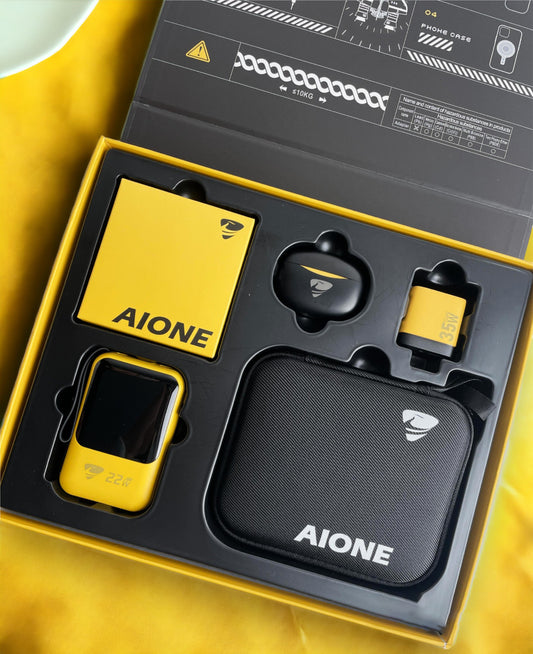
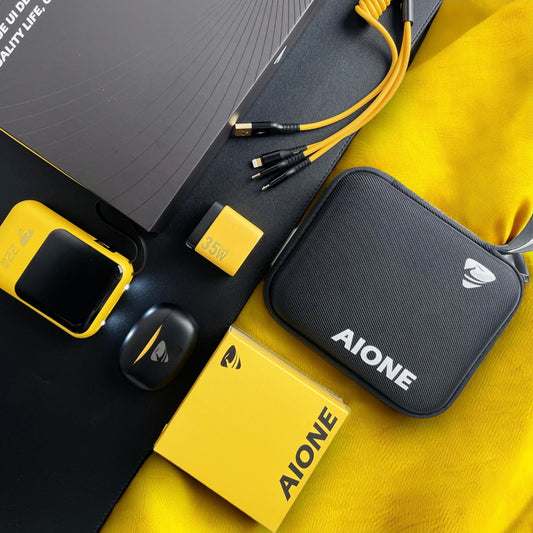
![[MFi Certified] iPhone Fast Charger PD 25W USB C Wall Charger with 3ft Type C to Lightning Cable](http://www.aioneus.com/cdn/shop/files/aioneus-iPhone-Fast-Charger-Block.jpg?v=1701934194&width=533)
![[MFi Certified] iPhone Fast Charger PD 25W USB C Wall Charger with 3ft Type C to Lightning Cable](http://www.aioneus.com/cdn/shop/files/aioneus-iPhone-Fast-Charger.jpg?v=1701934194&width=533)


